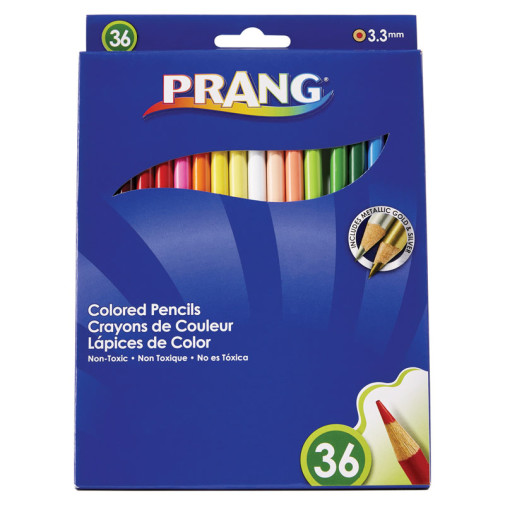We use cookies to make your experience better. To comply with the new e-Privacy directive, we need to ask for your consent to set the cookies. Learn more.
Prang Thick Core Color Pencil Set / 36 (3.3mm)
SKU
034976
Grade PK-AD
These icons are designed to help you quickly understand and learn important information about our products.
Teaching Method
Traditional
Teacher-centered curriculum commonly used in classrooms that may include a text, teacher manual, tests, etc.
Charlotte Mason
A methodology based on the work of a 19th century educator who maintained that children learn best from literature (Living Books), not textbooks.
Classical
A methodology based on the Latin Trivium (three stages of learning), including the grammar stage (memorization and facts), logic stage (critical thinking), and rhetoric stage (developing/defending ideas).
Unit Study
A thematic or topical approach centered around one topic that integrates multiple subject areas.
Montessori (Discovery)
A methodology based on the work of a 20th century educator that emphasizes student and sensory-driven discovery learning and real-life applications.
Other
Other methodologies
Religious Content
Secular
Contains content contrary to common Christian beliefs (i.e. evolution).
Neutral
Avoids religious or theoretical topics or presents multiple viewpoints without preference.
Christian/Religious
Faith-based or including instructional religious content.
Learning Modality
Auditory
Learns through listening, talking out loud or reading out loud.
Visual
Learns through seeing, prefers written instructions and visual materials.
Kinesthetic/Tactile (Hands-On)
Learns through moving, doing and touching.
Multi-Sensory
Curriculum that employ a variety of activities/components.
Presentation
Sequential
Curriculum progresses through well-defined learning objectives. Emphasizes mastery before moving to the next topic.
Spiral
Topics and concepts are repeated from level to level, adding more depth at each pass and connecting with review.
Conceptual/Topical
Focus is on the “why,” often with a unifying concept as well as specific skills; coverage may be broader.
Teacher Involvement
Low Teacher Involvement
Student-led materials; parent acts as a facilitator.
Medium Teacher Involvement
A mix of teacher-led time and independent student work.
High Teacher Involvement
Teacher-led lessons; may utilize discussions, hands-on activities and working together.
Additional Materials Required
No other materials needed
Everything you need is included.
Other Materials Required
There are additional required resources that are a separate purchase.
Other Materials Optional
There are additional resources mentioned or recommended but are not absolutely necessary.
Consumable
Consumable
Designed to be written in; not reusable.
Non-Consumable
Not designed to be written in; reusable.
Our Price
$12.94 $12.94 $11.50
Rainbow Savings: $1.44
Description
Publisher's Description of Prang Thick Core Color Pencil Set / 36 (3.3mm)
Since 1882 Prang Art & Craft solutions maintained an uncompromised quality to ignite the passion of our valued creative customers. With a delicate, rich 3.3mm core guarded by real wood you will experience an unmatched smoothness in the laydown. While the intense pigments will bring your ideas and dreams to life in vivid colors easier to mix so you can create unique shades that reflect your ambitions! They are conveniently pre-sharpened, so they are ready to use right out of the box. AP certified non-toxic.
- Smooth core delivers vivid, blend-able colors and soft laydown
- Durable pencils with long lasting core provide bright colors and resist fading
- 3.3mm break resistant core holds up under pressure
- Real wood casing ensures consistent, easy sharpening
- AP certified non-toxic
Category Description for I Can Do All Things 2nd Ed.
An encouraging, step-by-step program, combining lessons in drawing, colored penciling, painting, and open-ended art appreciation. Very appealing coloring-book-type artwork and motivating instructions make this an extremely friendly course for the beginning artist.
Category Description for Art Materials Needed For I Can Do All Things
Includes book with paint cards, acrylic paint set with brushes, pen, washable markers, eraser, 12 Prismacolor Scholar colored pencils, pencil sharpener and #7 brush.
Art materials needed for use with I Can Do All Things are listed below for your convenience:
Details
| Product Format: | Art / Craft Supply |
|---|---|
| Brand: | Prang |
| Grades: | PK-AD |
| EAN/UPC: | 072067223609 |
| Length in Inches: | 7 |
| Width in Inches: | 5.5 |
| Height in Inches: | 0.5 |
| Weight in Pounds: | 0.5 |
Videos
Reviews

